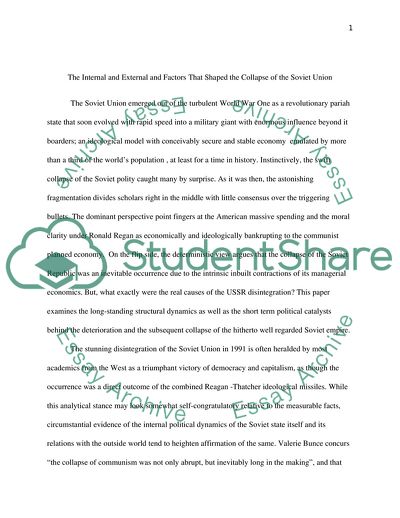Cite this document
(The Internal and External and Factors That Shaped the Collapse of the Soviet Union Essay Example | Topics and Well Written Essays - 2000 words - 1, n.d.)
The Internal and External and Factors That Shaped the Collapse of the Soviet Union Essay Example | Topics and Well Written Essays - 2000 words - 1. https://studentshare.org/history/1790427-what-were-the-causes-of-the-collapse-of-the-soviet-union
The Internal and External and Factors That Shaped the Collapse of the Soviet Union Essay Example | Topics and Well Written Essays - 2000 words - 1. https://studentshare.org/history/1790427-what-were-the-causes-of-the-collapse-of-the-soviet-union
(The Internal and External and Factors That Shaped the Collapse of the Soviet Union Essay Example | Topics and Well Written Essays - 2000 Words - 1)
The Internal and External and Factors That Shaped the Collapse of the Soviet Union Essay Example | Topics and Well Written Essays - 2000 Words - 1. https://studentshare.org/history/1790427-what-were-the-causes-of-the-collapse-of-the-soviet-union.
The Internal and External and Factors That Shaped the Collapse of the Soviet Union Essay Example | Topics and Well Written Essays - 2000 Words - 1. https://studentshare.org/history/1790427-what-were-the-causes-of-the-collapse-of-the-soviet-union.
“The Internal and External and Factors That Shaped the Collapse of the Soviet Union Essay Example | Topics and Well Written Essays - 2000 Words - 1”. https://studentshare.org/history/1790427-what-were-the-causes-of-the-collapse-of-the-soviet-union.


